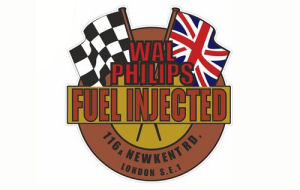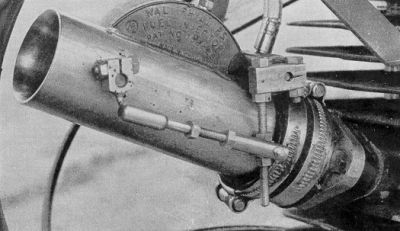


Wal's riding career came to an abrupt end in 1937 when he crashed in Sydney and broke his leg. When he came home, he joined Wimbledon as a non-riding captain. The team was in the doldrums, having lost 29 matches in a row, but before the end of the season, under Wal's guidance, they had won six; the following year were second in the league. During the war, he was on aero engine testing at De Havilland's, but immediately after the war, Vic Duggan who had been in the Wimbledon team pre-war and was now at Harringay, persuaded him to go there as Workshop chief and team manager. It was the same story. In 1947 they were bottom of the league, but in 1948 they were second from the top.

It was at this time when he was spending most of his time stripping and rebuilding JAP's that he tried just about every possible way of obtaining more power, always ending up with the same situation, that if you got more at the top-end, you lost it on the bottom end and vice-versa.
During this period, he did some development for JAP's and advised them to revert to the short four-stud engine. Big ends had improved over the years and were no longer the limiting factor. Wal began to think of the Indianapolis cars which had to have punch at low speeds to pull high gears that in a way, was the same requirement as for the speedway engine. And without exception, they were going in for Fuel injection - if it worked for them then it ought to work for a speedway engine.
He was of course thinking then, as most of us have thought, that the essence of fuel injection is to squirt a metered amount of fuel either into the cylinder as on a diesel or into the inlet port by the means of some form of timed pump. the only other possibility he could see at first was have an injector valve linked to the inlet rocker. Fuel could be supplied under continuous pressure and the valve would open at some predetermined moment controlled by the valve timing. He actually played around with such an idea but never got anywhere. It was then that a memory from the past started a new train of thought.
A long time previously, well before the war, he had worked with A.F.Ashby, who used to drive a very fast Riley at Brooklands (the secret of its speed and noise was that it had JAP valve contours) and later rebuilt a big Alfa. Returning from Brooklands one day, the Ford V8 transporter ran out of fuel. Filling the tank was only half the problem because the petrol pump was engine driven. Ashby, Wal recalled, did no more than remove the air cleaner and pour petrol into the downdraught carburettor choke as he pressed the starter. So Wal thought it might be possible to get an engine to run by squirting petrol into the inlet tract continuously.

It did not take him long to make a mock up. A short piece of JAP exhaust pipe and a turncock petrol tap was the basis. There had to be throttle control so he made a simple butterfly and as it seemed pretty obvious that the more the throttle was opened the more petrol the engine would take he linked butterfly and petrol cock together. The first try out was in a car park. The engine started straight away and after slight adjustment, the engine answered the throttle. After one blast across the car park he knew he had got something.
The first speedway rider to try it in a race was Waterman who won, although Wal admitted it had not quite got the getaway at first. Of course the exhaust pipe was much to big, and when he made a second one with a bit of 1 1/8" pipe, the getaway was much better. So much so, that Waterman, who tried it out in practice, wanted to use it in a vital race at Wembley, but Wal declined saying it was still very much in the experimental stage.
Speedway at that time was going downhill fast and Wal decided to opt out before he was chucked out and started his own motorcycle business - the injector was placed in a drawer and in his words, "forgotten about". Some time later, he dug the injector out of the drawer and tried it on a few bikes. It performed well on a Villiers engined scrambler, in fact it was never at all fussy about what it was fitted on.
Wal did not persevere in trying to get it taken up by speedway riders. The fact is that, although it had been tried out with excellent results by one rider in particular, speedway riders in the main were very conservative, preferred the conventional set up and no longer wanted to experiment ...Mark Spearman was intrigued when he read this section and was kind enough to forward a couple of pictures that feature an early prototype of Wal's Fuel injector ...
My father and I read with interest, your write-up about Wal's injectors. We thought you might also be interested in these pictures of a prototype flat slide injector that Wal had been working on. The fuel goes in the brass pipe on top of the casting. Inside the casting is a bar with a hole through it. As the throttle is opened, the hole in the casting and the bar line up, drawing the fuel in. The second picture shows the slide at half throttle.

More information on Wal and the story of the JAP engine can be found on my pages of